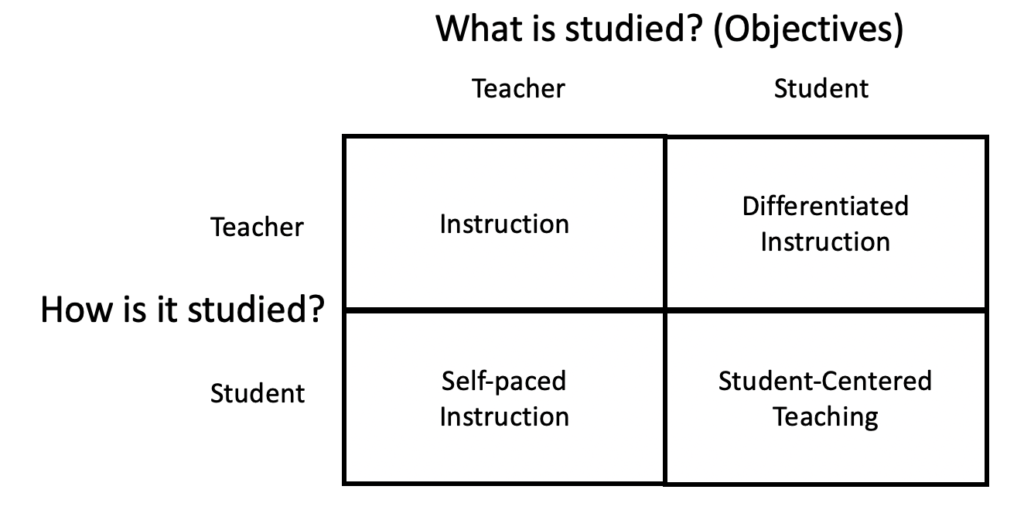Perhaps it is the many advertisements that have found there way through my spam filter recently. Perhaps it is that I have been reading (actually browsing) equal amounts of vendor-created content in trade magazines and peer-reviewed book chapters and articles from academic authors. Regardless of the origins, it is coming clear to me that there are three terms that seem to be synonymous to some writers, but clearly differentiated to others.
As the terms (student-centered, differentiated, individualized) have important implications for classroom practices and the nature of students’ learning experiences, this is my attempt to introduce some dimensions to define and differentiate these terms.
It must be recognized that the three terms have been introduced in recent years to encourage educators to recognize that students are different; therefore different learning objectives and different rates of progress through the curriculum are appropriate for different students. In general, we can recognize that the pace at which a student works through the curriculum can be determined by the student or by the teacher. Also the learning outcomes may be different for different students.
Together, these two dimensions lead to four types of instruction:

- Teacher controlled pace and common objectives for all students can be accurately labeled as instructionist education. In this model (familiar to by schooling in the 1970’s and to my children in the 2000’s) teachers decide what is taught, when it is taught, and all of the students either keep up or fall behind.
- Teacher controlled pace but student specific objectives are commonly called differentiated instruction. What is taught to different students (and how it is assessed) may be different for different students, but the teacher is the primary evaluator and judge of when to proceed to the next topics.
- In classrooms where the students progress through the curriculum at their own pace is individualized instruction; the current interest in competency-based education and the mastery learning of previous generations are examples of this model.
- Finally, in those classrooms in which students play an active role in defining what is to be studied, how it will be assessed, and when to move on to the next topic; we can properly label the curriculum student-centered.
While there are other relevant dimensions of teaching and learning, these terms seem to be defined through these two dimensions. Clearly, as well, there are situations in which each of these are appropriate (or inappropriate). In my experience, good teachers understand these differences and use the correct model for the purpose. Further, good teachers will ensure students have the opportunity to experience each during each course they complete.
(c) 2016 Dr. Gary L. Ackerman